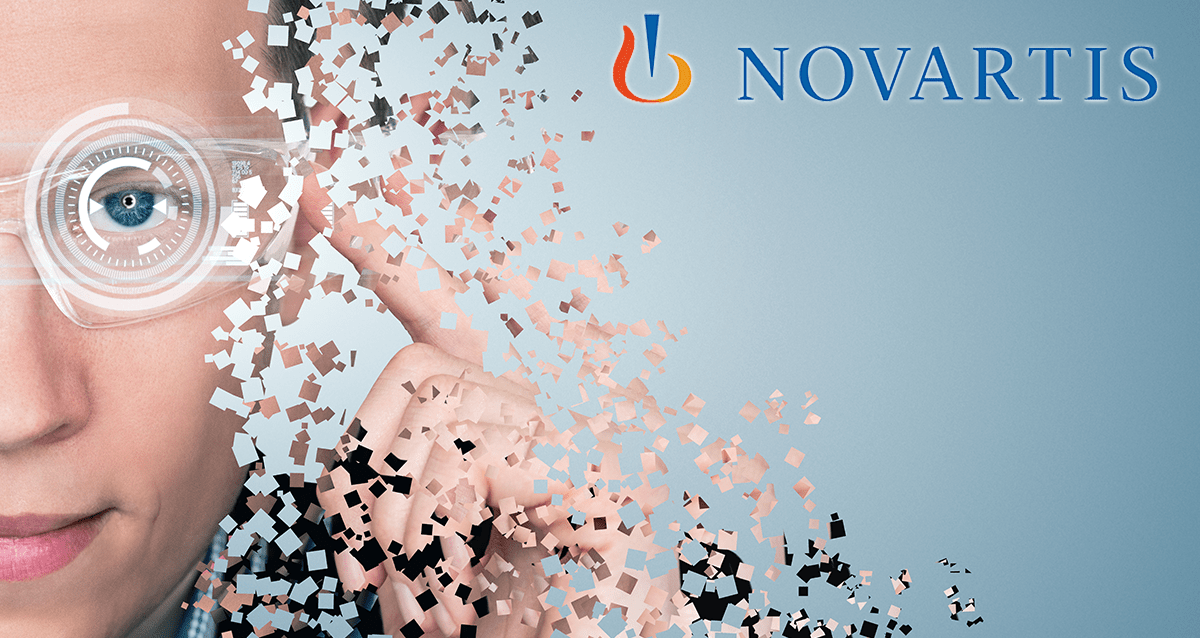With Amblyotech Buy, Novartis Makes a Transformation to the Ophthalmic Device Arena

Most transformations are predictable: A caterpillar will turn into a butterfly; a cell will be genetically altered should extraneous DNA enter its membrane.
Predictable would not characterize Novartis’ self-imposed transformation. Two years ago, the company said it would transform itself into a prescription medicines-only pharma house. This pronouncement was made by Novartis’ Vasant Narasimhan in the same breath in which he talked about the company’s pending split with Alcon. Scripts only, the chief executive told the Wall Street Journal, “is where I think we need to be successful.”
A Rethink in the C-Suite
Since then, there’s been a rethink at Novartis. In April, Novartis acquired Amblyotech, a digital-therapy company focused on video games to treat amblyopia via a dichoptic technique. Novartis would not verify a purchase price. Nikos Tripodis, global business franchise head, ophthalmology, said in an email that Amblyotech “bolsters” Novartis’ anterior segment portfolio.
Previous front-of-the-eye acquisitions include Xiidra (lifitegrast), the dry eye medication, and Encore Vision, a presbyopia eye drop developer bought in late 2016. The $5.3 billion Xiidra buy from Takeda Pharmaceutical came three months after the Alcon shed, in June 2019.
Perhaps its growth in the ophthalmic field influenced Novartis’ zig in its zag transformation, and who would argue with that rationale? In its 2019 annual report, the company stated that its ophthalmology unit brought in $4.8 billion in net sales, a gain of 5% over 2018. Of the Swiss giant’s six pharmaceutical business units, ophthalmology came in third, behind the oncology and established medicines units, the latter being those drugs with significant history (think Ritalin) and facing patent expiration.
In the report, Novartis attributed its ophthalmic unit’s growth to a few factors, including:
• The Xiidra purchase.
• Increased sales for Lucentis (ranibizumab), for which Novartis holds ex-US rights and which gained approvals here and abroad for other retinal indications.
• The launch of Beovu (brolucizumab), Novartis’ new, three-month interval injection treatment approved last year for wet age-related macular degeneration, although it has since encountered negative reports about rare but significant vision-threatening side effects.
Why Amblyotech? Why Now?
What may be notable about the Amblyotech purchase is both the choice of company due to its clinical trial history and the decision to treat amblyopia in the first place. Age of diagnosis and treatment compliance are vital factors in successful treatment of amblyopia. Someone with amblyopia has one eye, normally, that from a very early age has not effectively channeled light from the retina to the visual cortex. The other eye compensates for the blurred vision.
With dichoptic therapy, the bad eye does the work and the normal eye remains passive. This method trains the eyes to work together. The user wears 3-D glasses during video therapy. “The science behind the therapy is strong,” Tripodis said. This therapy, he continued, requires just a few hours over eight weeks to correct the vision problem compared with the hundreds of hours that a patch requires.
The younger the child at diagnosis, the better the chances of reversal to normalcy. A 2014 study reported that using a patch or atropine worked just fine in a randomized clinical trial of 419 children, as long as the child was under age 7 years at diagnosis.1
But in another trial involving 138 youngsters between ages 7 and 12 years with amblyopia and a mean baseline of 59.6 letters and prior amblyopia treatment, investigators found no benefit for those patients using Amblyotech’s Dig Rush video game. Earlier studies with Dig Rush did find benefit, but only in younger children.2,3 Tripodis said compliance had been a huge issue in the trial.
Proof of Concept Due This Year
The plan is for Novartis to work in concert with Ubisoft, a video game developer, to develop the Amblyotech software as a medical device. Novartis said Ubisoft will conduct a proof-of-concept study later this year.
Comparative studies would follow: patch versus game in children, and placebo versus game in adults. Amblyopia can return after treatment.
Tripodis said Novartis would “explore” the device’s potential to treat other refractive issues such as diplopia and 3-D vision deficiencies. Digital therapeutics can “enhance patient experiences and current standards of care, but this is a new area for us [about] which we are learning a lot,” Tripodis said.
References
1. Repka MX, Kraker RT, Holmes JM, et al., for the Pediatric Eye Disease Investigator Group. Atropine vs. patching for treatment of moderate amblyopia: Follow-up at 15 years of age of a randomized clinical trial. JAMA Ophthalmol. 2014;132:799-805.
2. Kelly KR, Jost RM, Dao L, Beauchamp CL, Leffler JN, Birch EE. Binocular iPad game vs. patching for treatment of amblyopia in children: A randomized clinical trial. JAMA Ophthalmol. 2016;134:1402-08.
3. Holmes JM, Manh VM, Lazar EL, et al., for the Pediatric Eye Disease Investigator Group. JAMA Ophthalmol. Effect of a binocular iPad Game vs. part-time patching in children aged 5 to 12 years with amblyopia: A randomized clinical trial. 2016;134:1391-400.
4. Pediatric Eye Disease Investigator Group, Holmes JM, Manny RE, et al. A randomized trial of binocular dig rush game treatment for amblyopia in children aged 7 to 12 years. Ophthalmology. 2019;126:456‐66.
